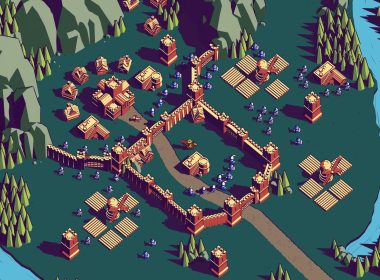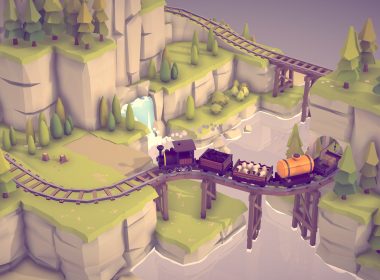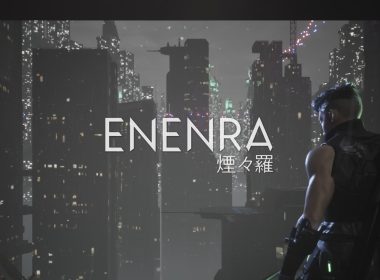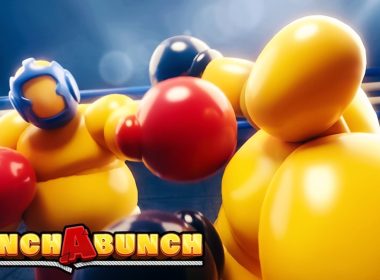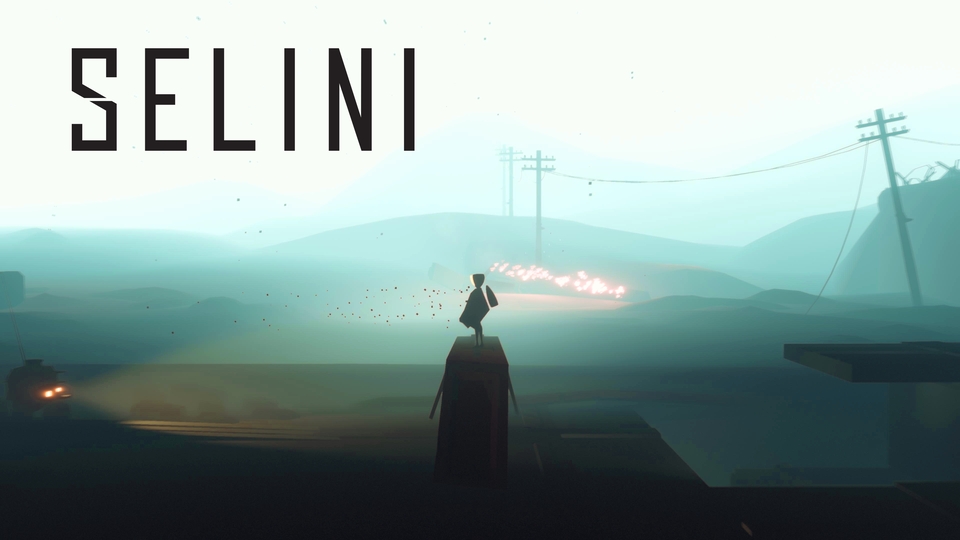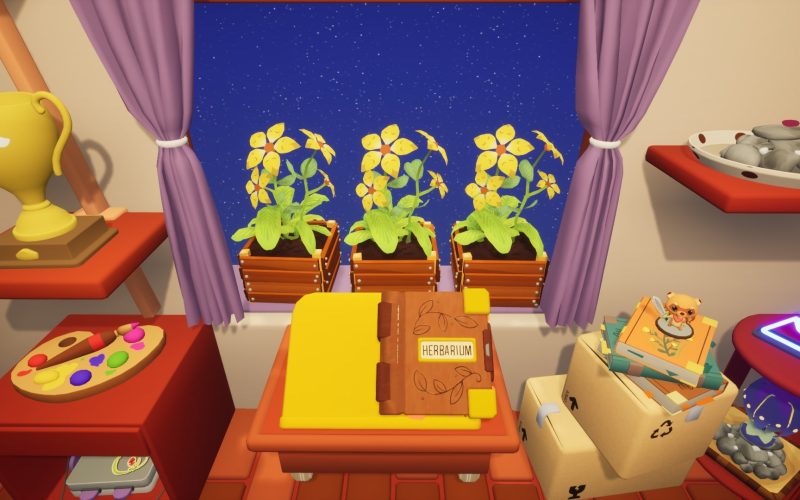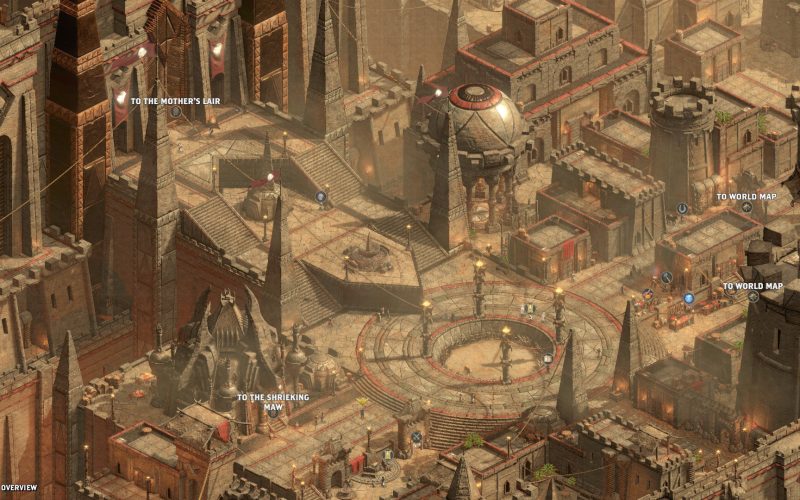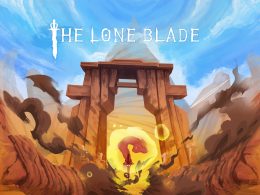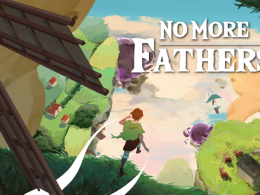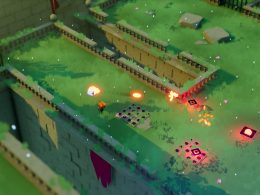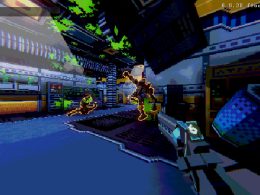Step into a mesmerizing world where ethereal lights dance amidst swirling mists, captivating your senses and drawing you into an otherworldly realm. SELINI, the enchanting new game developed by Cymban Games, has been making waves in the gaming community with its stunning visual aesthetics and immersive gameplay. From the moment I laid eyes on the game’s breathtaking look and feel, I knew I had to learn more. Unable to resist the allure of Selini’s atmospheric beauty, I reached out to Andreas, the creative mastermind and developer behind Cymban Games, to secure an interview for our blog. Join me as we delve into the captivating universe of SELINI and uncover the inspiration and secrets behind its magical ambiance!
What inspired you to create a game like Selini?

It was actually my son! One night he asked me a very simple question: “Why do we have to play all these games on your phone? Why don’t we make our own game?!”.
It was a life changing question for me. Right after I put him to sleep, I immediately went on Youtube and searched “how to make a video game”! So, here we are…
What kind of research and preparation did you do before starting development on your game?
Literally zero! I had very little knowledge in making games and I wasn’t even a gamer when I started. All I knew is that I would love to tell an important story with this technology. The fact that I had no real idea about how hard games are to make, ended up to be a great advantage for me as I never limited my dreams and scope by relevance to the technical aspect. I just blindly shot for the Moon from day one and had to catch up on the way with “preparation”!

We love the name ‘SELINI’ for your game – it has a nice ring to it! Could you tell us how you came up with the name? Does it have any particular meaning or inspiration behind it?
Before naming the game, I needed to find a name for the studio. I fell in love with the name Cymban, which coincidentally means ‘universe’ in Greek. So, since the studio’s name signifies the universe, why not embark on this journey with a game called SELINI, which translates to ‘moon’ in Greek, representing Earth’s very own lunar companion!!
What are some of the key gameplay mechanics that players can expect to encounter in your game, and how do they work together to create a compelling experience?
SELINI is a non-linear exploration platformer (metroidvania) centered around mystery and simplicity.
Regarding mystery, apart from the overall atmospheric elements, the game deliberately lacks any form of guidance. There are no texts or speeches, not even in the menus, and players must interpret the world and devise their own exploration strategies.

As for simplicity, the game relies on established mechanics within the metroidvania genre to convey its ideas and actions. I have come to realize that overly innovative ideas are unsuitable for SELINI. Therefore, the game’s primary focus is on providing an enjoyable experience through well-polished and coherent ‘raw materials,’ rather than introducing unnecessary complexity.
How did you approach designing the art style and aesthetics of the game, and what were some of the biggest challenges you faced in that process?
The global fog plays a very important part of it. It works as a base to build a whole world upon it. It’s relatively easy with the fog to create depth and quickly have results that can add to the general ambience. Learning 3d modeling was one of the challenging tasks at the early stages of development.
The original 3d models helped to give a soul and identity to the game. However, as a solo developer with no budget, if I had to finish this project alone, I had to find more efficient solutions. So, I decided to buy generic assets from Unity’s assets store and worked with artists on Fiverr to create more original content. This was one of the wisest decisions I made that skyrocketed development speed!

What was the most difficult aspect of developing your game, and how did you overcome any obstacles you encountered?
Most people believe that the hardest part should have been developing the mechanics and systems for the game, especially when I come from an artist’s background with no experience in coding. The truth is that creating mechanics and systems was the easiest part of the process because If you have a technical problem, at least you know where to look for it. You have some sort of guidance, let’s say.
The most challenging part for me was the narration. So, you create a protagonist that moves around, jumps etc. You place this character in a beautiful and moody environment with fog and great ambient sounds. So what! By itself it doesn’t mean anything at all. So, the real challenge came after the core mechanics were completed. How do you keep someone engaged and interested in a game to a level where they are not only able to keep playing but also happy to pay for it! It was a huge slap in my face when I realized it! All these issues were revealed but also solved during testing. Testing is really important!

Your game features some really striking lighting effects. Can you talk about the process of creating the game’s lighting design, and any particular challenges you faced along the way? What about the pipeline you’ve chosen (HDRP/URP/CUSTOM)?
With the fog as a base, I usually start creating the levels in simple boxes. For some reason, it already looks kind of cool even at this stage! The fog can do miracles!
As soon as the level is complete from a level design perspective, it’s time to start making it look beautiful.
First thing I check is for potential light sources in the background for nice silhouettes and shadows. I try to avoid directional lights (sun) even in outdoor areas and try to light everything locally for more control.
Then, I start using an assets gallery for details in the world, and simultaneously edit them in Blender to give them character and adapt them to the world.This part is important as you can decide to emphasize a specific area just by framing it in a shadowed zone for example.
Also, this part is the most demanding phase from a time and energy perspective. I feel exhausted at the end of the day when I have to polish a level.

Something maybe worth mentioning is that most of the coloring in the game is achieved with lights and not materials. There are no more than 10 materials in the whole game (usually shadows of gray) where lights color them according to the need of the level.
When I started SELINI back in 2016, URP and HDRP were not really a thing. I use the built-in renderer in the Unity engine and I’m not open (for this project) to the idea of switching renderer.
How has Unity helped you in the development of your game?
Honestly, I cannot really compare it to something else as I don’t know much about other game engines.
I certainly know that Unity made me a game developer out of nowhere and the huge number of available tutorials and community is perhaps the biggest part of it.
So, the first 3 years of development I could easily find answers to everything I needed with a simple search on the internet.However, at some point I knew that things had gotten really serious with SELINI because there were no longer tutorials to answer my new questions! So, at that point I realized that I don’t need tutorials anymore.

What kind of development tools and software did you use to create the game, and why did you choose those particular tools?
If it was illegal to have more than one asset from Unity’s Asset Store, then the one to have should be Playmaker!
Playmaker is a visual scripting plugin for Unity and it’s a life saver for non coders like me. I’ve been doing this for years now, so on the way I learned how to hard code as well, however I keep using Playmaker as it makes it really fast and efficient to build anything.
Blender has been of course a huge part of development for 3d modeling and animations.
Lately I have been using Krita for creating 2d sprites for menus etc.
I need to take a moment here to mention that most of these programs are free to use!
I’m still amazed by this everyday and I tell myself “you have no excuse to not go for your dreams”. The tools for it are free to use. This is crazy!

Alright, we have to know – how many Steam wishlists has your game racked up so far? And more importantly, what kind of secret marketing tactics have you been using to boost that number? Subliminal messaging? Hypnosis? Dancing in the streets with a sign that says ‘Wishlist My Game’? Inquiring minds want to know!
I would say that SELINI’s steam page was dormant for years. Right now, we are close to 7000 wishlists, where more than half of those came during this last year where I had to be “noisy” around the internet.
Good news is that the game is on a rapidly growing curve, but there has to be a lot of effort in the background for that.
How could someone support your project?
SELINI recently ran a successful Kickstarter campaign and we raised funds for a PC and Nintendo Switch release.
It is common nowadays to continue a successful crowdfunding campaign on another platform.
I decided to continue with Indiegogo INDEMAND where people can keep supporting our project for a discounted copy together with more digital rewards.
Here is the link to support on Indiegogo:
https://www.indiegogo.com/projects/selini
